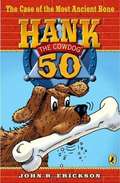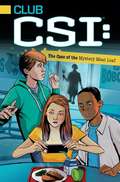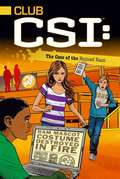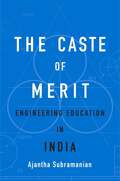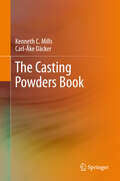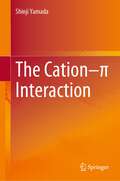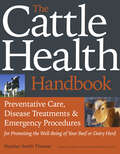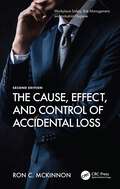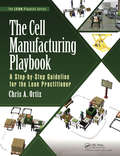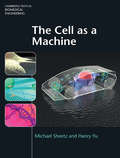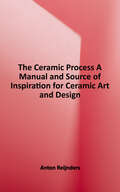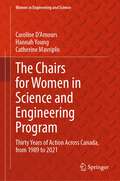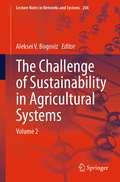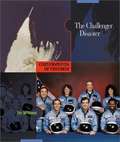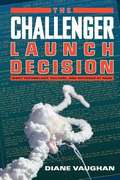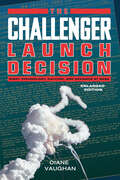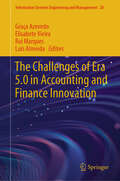- Table View
- List View
The Case of the Missing Moola (Club CSI)
by David LewmanCrack a case with Club CSI: in this new middle-grade series about forensic science!Calling all kid crime-solvers: Forensic science isn't just for grown-ups anymore! Thanks to the popularity of shows like CSI: Crime Scene Investigation, forensic science has made its way into the classroom. This new middle-grade series stars a group of students whose forensic science class inspires them to form a "Club CSI:" to investigate crimes and capers at school. As Club CSI: collects clues, readers will love trying to put the pieces together to find out what really happened in this series that is part mystery, part detective story, and just plain fun!In Club CSI: Untitled #2, Ben, Corey, and Hannah will have to use all they've learned about forensic science--plus good old-fashioned detective work and a little bit of luck--to solve their next case! Inspired by the CSI franchise, Club CSI: is "required reading" for young scientists-in-training, or for anyone who loves a good mystery!
The Case of the Most Ancient Bone (Hank the Cowdog Series, #50)
by John R. EricksonHank the Cowdog Head of ranch security is on the case in his fiftieth mystery! And this is no ordinary, run-of-the-mill ranch intrigue. No sir, this is a real, honest-to-goodness archaeological adventure! when an old friend of Slim's starts an archaeological dig near the ranch, it doesn't take long before little Alfred gets caught up in the excitement. And once Alfred manages to get himself invited to the dig, it isn't long before Hank follows. once there, Hank finds himself face-to-face with the most ancient of bones a huge bison bone that Hank just knows has been aged to delicious perfection. Hank should be protecting the bone, but can he keep his doggie instincts at bay and uphold his position? or will the most ancient of bones get the best of him?
The Case of the Mystery Meat Loaf (Club CSI)
by David LewmanHow do you dust for fingerprints on a meat loaf? Club CSI: is on the case in this new middle-grade series about forensic science!Calling all kid crime-solvers: Forensic science isn't just for grown-ups anymore! Thanks to the popularity of shows like CSI: Crime Scene Investigation, forensic science has made its way into the classroom. This new middle-grade series stars a group of students whose forensic science class inspires them to form a "Club CSI:" to investigate crimes and capers at school. As Club CSI: collects clues, readers will love trying to put the pieces together to find out what really happened in this series that is part mystery, part detective story, and just plain fun!In The Case of the Mystery Meat Loaf, Ben, Corey, and Hannah's first case as Club CSI: begins when a bunch of students and the principal get food poisoning from the cafeteria's hot lunch. Everyone blames the new science teacher because she pushed the lunch lady to add her healthy "meatless meat loaf" recipe to the menu, but Club CSI: isn't pointing fingers until they evaluate the evidence. Can they find out who messed with the meat loaf before the science teacher gets in trouble or more people get sick? Club CSI: is on the case!
The Case of the Ruined Ram
by David LewmanThe Club CSI: kids team up to solve a crime of school spirit gone wrong.The students in Miss Hodges's forensic science class have been given a tough case to crack: The high school's Rocky the Ram mascot costume was stolen and destroyed! The class divides into teams to investigate, and the first team to solve the crime wins extra credit and gets VIP tickets to Rams games for the rest of the year! Corey, Hannah, and Ben quickly get to work. They discover that a very similar crime happened twenty-five years ago, and back then the rival high school confessed to the vandalism. Is this just a copycat prank? Or could someone else be to blame? Club CSI: is determined to be the first team to uncover the truth! © 2012 CBS & Ent. AB Funding LLC. CSI: Crime Scene Investigation in USA is a TM of CBS and outside US TM of Ent. AB Funding LLC.
The Caste of Merit: Engineering Education in India
by Ajantha SubramanianJust as Americans least disadvantaged by racism are most likely to call their country post‐racial, Indians who have benefited from upper-caste affiliation rush to declare their country a post‐caste meritocracy. Ajantha Subramanian challenges this belief, showing how the ideal of meritocracy serves the reproduction of inequality in Indian education.
The Casting Powders Book
by Kenneth C. Mills Carl-Åke DäckerThis book deals with casting powders and explains how they work and how they are best used to minimise defects in the ninety per-cent of world steel production that is continuously cast. The factors affecting various aspects of powder performance are described and different defects, their causes, and means of avoiding them are considered. Providing the first comprehensive coverage of mould powder properties and uses, the text treats theoretical and practical matters and gives direct advice on problem solving. Drawing on a wealth of scientific and technological research, represented by its extensive references, The Casting Powders Book shows readers how they can design and create mould powders optimised to fulfill the necessary functions of: lubrication of steel shells and reduction of shell-mould friction; absorption of inclusions floating up from the steel; chemical insulation of steel from carbon-rich mould powder; and protection of the steel meniscus from oxidation and thermal insulation to prevent surface freezing. Thermophysical properties and heat-transfer processes are also given detailed attention and case studies illustrate the methods and materials described. The Casting Powders Book is designed to be a periodic reference that can be dipped into as the need arises. Readers from different backgrounds are well-served by the depth and variety of content: engineers trouble-shooting a continuous-casting process interested in how mould fluxes can minimise defects and process problems and how their performance is in turn affected by casting parameters; academic scientists interested in the the theoretical aspects and properties of mould fluxes and slag films; or engineers working with ingot casting processes; and many others will find this book an invaluable resource.
The Castor Bean Genome (Compendium of Plant Genomes)
by Chittaranjan Kole Pablo RabinowiczThis book addresses various aspects of the current castor bean research, including genetics, biotechnology, comparative genomics, and more specific topics such as oil metabolism and the ricin toxin. It also presents the whole genome sequencing of the castor bean and its impact on the mining of gene families and future plant breeding. Castor bean (Ricinus communis), an oilseed plant, belongs to the Euphorbiaceae (spurge) family. It is a tropical and subtropical crop valued for the high quality and uniform nature of its oil, which is mostly composed of the uncommon fatty acid ricinoleate. Castor bean oil has important industrial applications for the production of lubricants, cosmetics, medicines, and specialty chemicals, and castor bean has also been proposed as a biodiesel crop that does not pose concerns regarding the “food versus fuel” debate. However, it accumulates the type 2 ribosome-inactivating protein ricin in its seeds, and health concerns posed by ricin’s high toxicity have prevented broader cultivation. Recently, there has been renewed interest in castor bean due to potential biosecurity issues.
The Catalogue of Computational Material Models: Basic Geometrically Linear Models in 1D
by Paul Steinmann Kenneth RunessonThis book gives a comprehensive account of the formulation and computational treatment of basic geometrically linear models in 1D. To set the stage, it assembles some preliminaries regarding necessary modelling, computational and mathematical tools. Thereafter, the remaining parts are concerned with the actual catalogue of computational material models. To this end, after starting out with elasticity as a reference, further 15 different basic variants of material models (5 x each of {visco-elasticity, plasticity, visco-plasticity}, respectively) are systematically explored. The presentation for each of these basic material models is a stand-alone account and follows in each case the same structure. On the one hand, this allows, in the true sense of a catalogue, to consult each of the basic material models separately without the need to refer to other basic material models. On the other hand, even though this somewhat repetitious concept may seem tedious, it allows to compare the formulation and resulting algorithmic setting of the various basic material models and thereby to uncover, in detail, similarities and differences. In particular, the response of each basic material model is analysed for the identical histories (Zig-Zag, Sine, Ramp) of prescribed strain and stress so as to clearly showcase and to contrast to each other the characteristics of the various modelling options.
The Cathedrals of Pisa, Siena and Florence: A Thorough Inspection of the Medieval Construction Techniques (Built Heritage and Geotechnics)
by Pietro Matracchi Luca GiorgiThe construction techniques and concepts of the cathedrals of Pisa, Siena and Florence are examined in detail, based on new data and using a methodological architectural diagnostics approach. New detailed surveys, carried out using often advanced tools, together with direct and in-depth inspections to examine all parts of the buildings, have enabled us to identify the building phases and the different construction techniques used over time. The information thereby acquired also formed the basis for a new interpretation of the archival documents. Accordingly, the problems encountered and the solutions adopted in the three cathedrals have been understood: in Pisa the construction of the elliptical dome above the rectangular crossing consisting of six thin pillars below; in Siena the design changes from the first system in the 13th century to the ‘Duomo Nuovo’, and the structural adaptations following earthquakes; the specific construction solutions adopted in Florence during the instability encountered in the construction of the large vaults of the basilican body. The comparison of the three buildings in terms of architectural and construction solutions also revealed unexpected relationships between the construction events of Siena’s Duomo Nuovo and the solutions then used in the large basilican body of Santa Maria del Fiore. The methodology employed has led to an understanding of the actual structure of the three cathedrals, an essential basis for a correct evaluation of the state of conservation of the churches for any restoration work. The book is aimed at scholars of architecture and ancient building structures, graduate and postgraduate students, and architects and engineers who plan architectural conservation and strengthening works for historical buildings.
The Cation–π Interaction
by Shinji YamadaThis book introduces the role of cation–π interactions in chemistry, biology, and polymer materials science. Since the cation–π interaction was defined in 1990, its importance has been recognized in a variety of fields due to its relatively significant interaction energy. A number of examples are introduced in which the contribution of cation-π interactions was evidenced by X-ray structures, spectroscopies, computations, and other means. The latest developments in these areas are remarkable; therefore, many recent examples are included.As this book covers the basic aspects of the applications of cation–π interactions it is useful for students and researchers in a wide variety of scientific fields. In addition, the book will not only facilitate understanding of the phenomena occurring in various systems but also provides insights into the design of new catalysts, reactions, and materials.
The Cattle Health Handbook: Preventative Care, Disease Treatments And Emergency Procedures
by Heather Smith ThomasIn this practical guide, Heather Smith Thomas provides easy-to-execute solutions for a variety of common medical situations that can afflict your animals, including bacterial diseases, parasites, and nutritional deficiencies.
The Cause, Effect, and Control of Accidental Loss (Workplace Safety, Risk Management, and Industrial Hygiene)
by Ron C. McKinnonThe Cause, Effect, and Control of Accidental Loss takes the reader through 15 phases of a typical workplace accident and shows how accidents can be prevented by the introduction of safety management controls in the form of a structured health and safety management system (SMS). It proposes that once the event has been triggered, there is no certainty as to the outcome, so workplaces should rely on proactive safety actions rather than reactive ones. Now fully updated, this new edition expands on the important concepts from the first edition, including hazard identification, risk assessment, flawed safety management systems, the potential for loss, and management control. This title: • Challenges the paradigm that the measure of consequence (losses) is a good indicator of safety effort. • Introduces three luck factors that determine the course of the accident sequence. • Explains what causes accidents, their consequences, and how to prevent them. • Showcases accident immediate causes including high-risk (unsafe) acts and high-risk (unsafe) conditions. The text is an essential read for professionals, graduate students, and academics in the field of occupational health, safety, and industrial hygiene.
The Cell Manufacturing Playbook: A Step-by-Step Guideline for the Lean Practitioner (The\lean Playbook Ser.)
by Chris A. OrtizThis book describes how to effectively implement cell manufacturing. It covers the eight Wastes of Lean and the six Lean metrics that are recommended in each implementation and a description of what cell manufacturing is and its application to improving operational processes.
The Cell as a Machine (Cambridge Texts in Biomedical Engineering)
by Michael Sheetz Hanry YuThis unique introductory text explains cell functions using the engineering principles of robust devices. Adopting a process-based approach to understanding cell and tissue biology, it describes the molecular and mechanical features that enable the cell to be robust in operating its various components, and explores the ways in which molecular modules respond to environmental signals to execute complex functions. The design and operation of a variety of complex functions are covered, including engineering lipid bilayers to provide fluid boundaries and mechanical controls, adjusting cell shape and forces with dynamic filament networks, and DNA packaging for information retrieval and propagation. Numerous problems, case studies and application examples help readers connect theory with practice, and solutions for instructors and videos of lectures accompany the book online. Assuming only basic mathematical knowledge, this is an invaluable resource for graduate and senior undergraduate students taking single-semester courses in cell mechanics, biophysics and cell biology.
The Centre of City: Acoustic Environment and Spatial Morphology
by Junyan Yang Hequn MinThe main focus of this monograph is urban acoustic environment of urban spatial morphology.It provides in-depth evaluation and research on the correlation between urban spatial morphology indicator and urban acoustic environment using urban spatial morphology and urban space units. Furthermore, it conducts quantitative analysis and statistic evaluation to reveal the relationship between urban planning indicators and acoustic environment. It also provides optimized strategies from three aspects of urban planning, architecture and landscape respectively. It intertwines the quantitative research of both acoustic environment and urban morphology through in-depth analysis and urban microclimate simulation by using Cadna/A acoustic simulation software. It concludes the influencing mechanism of acoustic environment on urban morphology. It makes a valuable contribution for the research on urban environment and urban morphology.
The Ceramic Process: A Manual and Source of Inspiration for Ceramic Art and Design
by Anton Reijnders European Ceramic Work CentreThe European Ceramic Work Centre (EKWC) is an international studio dedicated to the ceramic arts, in all of their various forms. Drawn from the resources at the EKWC, this volume elucidates every aspect of the ceramic process, from wedging clay to packing kilns. This useful resource will be valuable to potters of every skill level. Extensively and vividly illustrated, the book demonstrates complicated techniques visually. In addition to the helpful diagrams, works produced at EKWC are used as examples of the methods described in the text, offering specific uses for procedures. The process is integral to every clay piece, and this volume follows the logic of the steps of creation. The beginning chapters explain the early steps such as clay preparation and the various techniques of making. Following chapters are devoted to the later steps of drying and firing. Also included are numerous glaze and clay recipes, using a range of widely available materials. Complex and large-scale work, always demanding special attention and specialized knowledge, is comprehensively covered.
The Ceramics Bible: The Complete Guide to Materials and Techniques (Ceramics Book, Ceramics Tools Book, Ceramics Kit Book)
by Louisa TaylorCeramicists have been plying their art and craft for thousands of years, and never more prolifically than today. The Ceramics Bible is the most comprehensive and up-to-date volume on the subject. Brimming with more than 700 full-color photos and illustrations, this is the new definitive guide for serious ceramics practitioners. <p><p>Inside are step-by-step instructions on molding, firing, and glazing techniques, generously accompanied by detailed photographs. Also included are beautiful examples of contemporary work, plus plenty of historical information, artist profiles, troubleshooting tips, and an extensive resource section. Perfect for students, artists, and collectors, this is a tremendously valuable addition to the vibrant world of ceramics.
The Chairs for Women in Science and Engineering Program: Thirty Years of Action Across Canada, from 1989 to 2021 (Women in Engineering and Science)
by Caroline D'Amours Hannah Young Catherine MavriplisThis book describes the origins and evolution of Canada’s 30-year Natural Sciences and Engineering Research Council Chairs for Women in Science and Engineering Program. The book starts literally with a bang, right as Montreal and all of Canada were rocked by the 1989 Ecole Polytechnique Massacre of 14 women, describing how the Chair program took on a frenetic pace as a single Chairholder, Monique Frize, tried to respond to an entire country’s concerns about women in engineering, both as students and as professionals. The authors first cover the program from 1989 through 1997, when the program was expanded to five regional Chairs, of which there have been over three generations by now. The book then provides synopses of each Chairholder’s comprehensive regional program to recruit, retain and advance girls and women in STEM, organized by generation, providing a unique historical view of the changing landscape for research and outreach programs to increase the participation of women inmale-dominated scientific fields. Readers will find an effective model for national programs addressing equity, diversity, and inclusion in STEM and be inspired by the 16 strong role models who pioneered blended careers in STEM and gender equity advocacy.
The Challenge for Energy Justice: Correcting Human Rights Abuses
by Raphael J HeffronWritten by one of the world’s leading scholars in the field, this book provides a unique perspective on the connections between energy justice and human rights. Taking an interdisciplinary approach, the author offers an accessible discussion about the implementation of energy justice in practice. The book explores the rise of justice issues in the energy sector, the interdisciplinary nature of energy justice, the economics of energy justice and provides a practical case study on distributive justice. The penultimate chapter focuses on human rights and energy justice in a world first, and explores the topic from the perspective of the opportunity of last resort. This ‘opportunity of last resort’ is the national courts and is the place where societies can seek to have justice enforced through a variety of human rights being protected. Finally, energy justice risks are highlighted alongside the author’s proposed framework for the next generation of energy justice scholars.
The Challenge of Sustainability in Agricultural Systems: Volume 1 (Lecture Notes in Networks and Systems #205)
by Aleksei V. BogovizThis book presents a multidisciplinary collection of original contributions made by the leading scholars and practitioners on researching, building, and maintaining sustainable agricultural systems. Being the first of its kind, the book is divided into two volumes. This book presents a comprehensive and informed review of the current state of multidisciplinary knowledge on sustainability in agriculture. The gaps in the scholarly literature are identified and rigorously analyzed, presenting a clear picture of the promising research directions. The authors critically analyze the very concept of sustainable agricultural systems, primarily focusing on the interactions existing between their integral components and with external environments. Relying on the provisions of complex systems science, the scholars then discuss the best approaches and methodologies used to build a comprehensive understanding of agricultural systems, with relation to achieving and maintaining their sustainability. More than that, this book holds two rich sections on (1) agricultural economics and (2) rural sustainability. Understanding sustainable development as a movement toward clearly defined and measurable goals, a set of chapters explore those policies, practices, technologies, and management systems that have an impact on the sustainability of agricultural systems. Agricultural sustainability is an urgent issue to be addressed, and this book makes a unique contribution. Due to its practical focus, the book appeals to practitioners and policymakers working in agricultural economics, governance, and sustainability, not just academics. This is also a valuable resource for graduate students interested in agricultural systems, sustainability, as well as complex systems theory and practice.
The Challenge of Sustainability in Agricultural Systems: Volume 2 (Lecture Notes in Networks and Systems #206)
by Aleksei V. BogovizThis book brings together segmental knowledge and creates new insights on the sustainability of agricultural systems, critically analyzing not only individual system components, but also focusing on interactions between them and external environments. This book is primarily devoted to (1) agricultural agribusiness, (2) policies and institutions, and (3) farming systems. The compelling collection of chapters presents critical, comparative, and balanced perspectives on what changes are needed to achieve and maintain sustainability in agricultural systems, actively leading to new ways of thinking about these complex issues. The research presented relies on an array of methods developed within complex systems science, addresses the existing gaps in the scholarship, and uses original data collected on the development of agricultural systems. Finally, the authors provide robust conclusions and recommendations for both scholars and practitioners in the field of studying, constructing, and maintaining sustainable agricultural systems. The special focus of the book is on technologies, policies, and management systems enabling sustainable agricultural development. A rich collection of practical cases could be used to move from theories to reality. The book appeals to both academics and professionals working in the field.
The Challenger Disaster (Cornerstones of Freedom, 2nd Series)
by Tim McneeseRecounts events surrounding the explosion of the space shuttle Challenger in 1986, the first shuttle to carry a civilian passenger, and discusses the impact of this disaster on the U.S. space program. Includes bibliographical references and index.
The Challenger Launch Decision: Risky Technology, Culture, and Deviance at NASA
by Diane VaughanWhen the Space Shuttle Challenger exploded on January 28, 1986, millions of Americans became bound together in a single, historic moment. Many still vividly remember exactly where they were and what they were doing when they heard about the tragedy. In The Challenger Launch Decision, Diane Vaughan recreates the steps leading up to that fateful decision, contradicting conventional interpretations to prove that what occurred at NASA was not skulduggery or misconduct but a disastrous mistake. Journalists and investigators have historically cited production problems and managerial wrong-doing as the reasons behind the disaster. The Presidential Commission uncovered a flawed decision-making process at the space agency as well, citing a well-documented history of problems with the O-ring and a dramatic last-minute protest by engineers over the Solid Rocket Boosters as evidence of managerial neglect. Why did NASA managers, who not only had all the information prior to the launch but also were warned against it, decide to proceed? In retelling how the decision unfolded through the eyes of the managers and the engineers, Vaughan uncovers an incremental descent into poor judgment, supported by a culture of high-risk technology. She reveals how and why NASA insiders, when repeatedly faced with evidence that something was wrong, normalized the deviance so that it became acceptable to them. No safety rules were broken. No single individual was at fault. Instead, the cause of the disaster is a story not of evil but of the banality of organizational life. This powerful work explains why the Challenger tragedy must be reexamined and offers an unexpected warning about the hidden hazards of living in this technological age.
The Challenger Launch Decision: Risky Technology, Culture, and Deviance at NASA, Enlarged Edition
by Diane VaughanWhen the Space Shuttle Challenger exploded on January 28, 1986, millions of Americans became bound together in a single, historic moment. Many still vividly remember exactly where they were and what they were doing when they heard about the tragedy. Diane Vaughan recreates the steps leading up to that fateful decision, contradicting conventional interpretations to prove that what occurred at NASA was not skullduggery or misconduct but a disastrous mistake. Why did NASA managers, who not only had all the information prior to the launch but also were warned against it, decide to proceed? In retelling how the decision unfolded through the eyes of the managers and the engineers, Vaughan uncovers an incremental descent into poor judgment, supported by a culture of high-risk technology. She reveals how and why NASA insiders, when repeatedly faced with evidence that something was wrong, normalized the deviance so that it became acceptable to them. In a new preface, Vaughan reveals the ramifications for this book and for her when a similar decision-making process brought down NASA's Space Shuttle Columbia in 2003.
The Challenges of Era 5.0 in Accounting and Finance Innovation (Information Systems Engineering and Management #28)
by Graça Azevedo Elisabete Vieira Rui Marques Luís AlmeidaThis book seeks to explore the transformative impact of emerging technologies on the accounting and finance sectors, with a specific focus on how innovations such as artificial intelligence and digital currencies can align with human-centric values like sustainability, corporate responsibility, and ethical governance. It provides a comprehensive analysis of the challenges and opportunities presented by ‘Era 5.0,’ where technological advancements are coupled with societal progress. Featuring cutting-edge research from leading scholars and industry experts, the collection spans a wide array of topics. Readers will find detailed studies on sustainability reporting, corporate governance, and the role of AI in financial processes, alongside examinations of cross-border tax evasion, the integration of education for sustainable development, and the use of geospatial analysis in business decisions. Other key areas of focus include the Common Reporting Standard (CRS), financial inclusion, and the interplay between human capital and corporate performance. This book serves as an essential resource for academics, practitioners, and policymakers aiming to understand the rapidly evolving dynamics of accounting and finance in a technologically advanced and socially responsible world. Whether reader's interest lies in innovative financial technologies or the ethical dimensions of corporate behavior, this book provides the insights needed to navigate the future of the field.”

